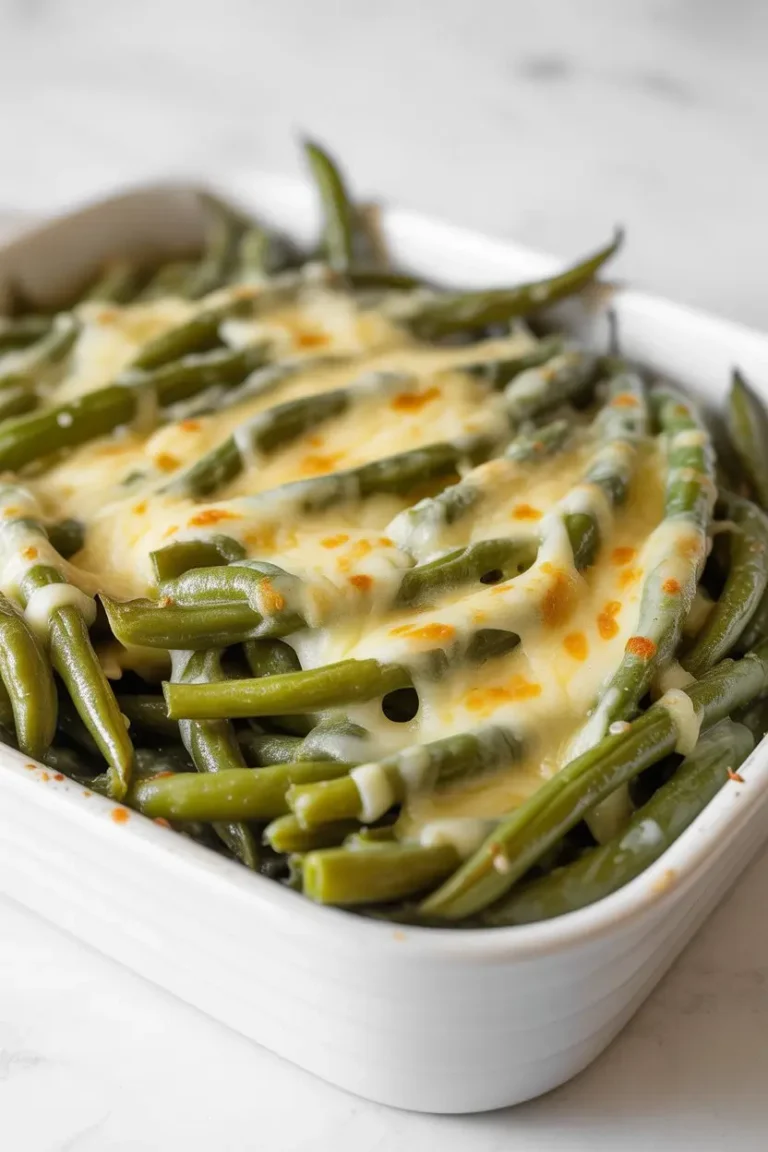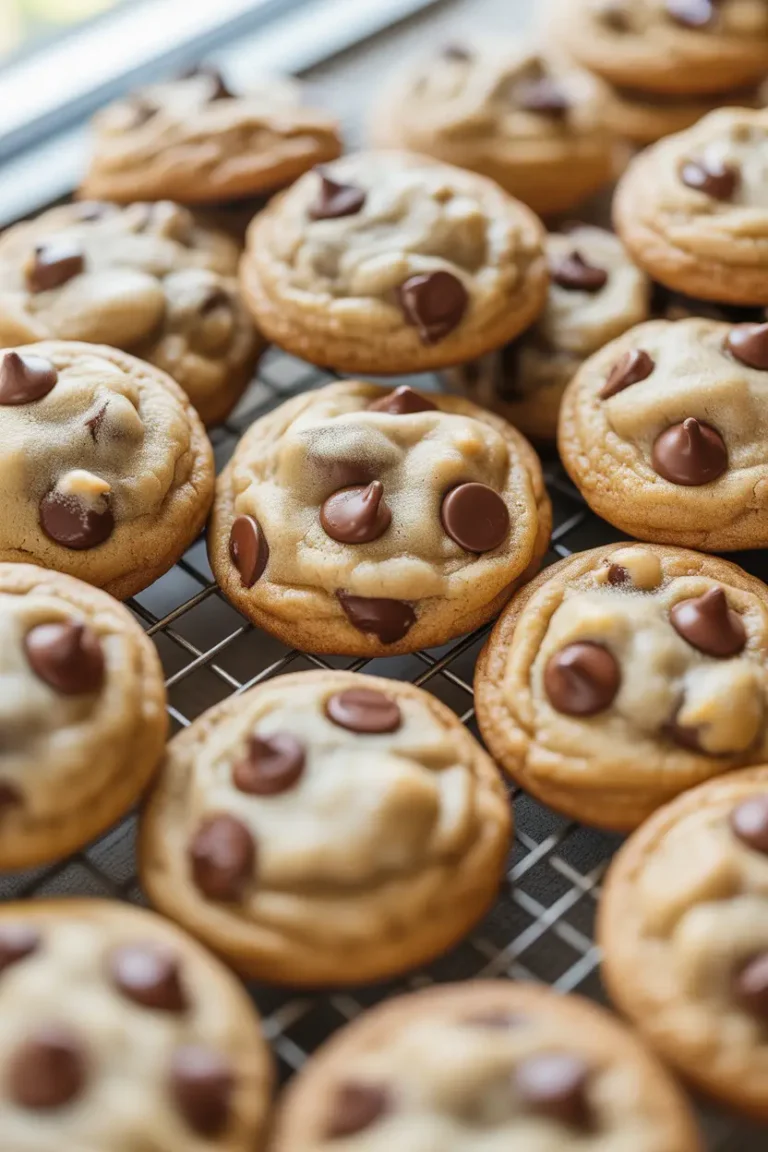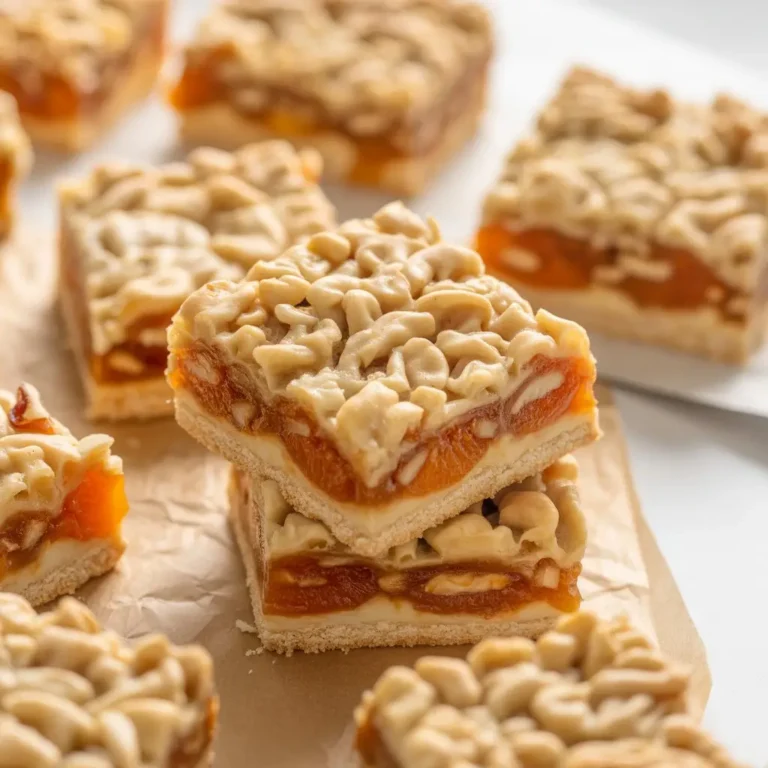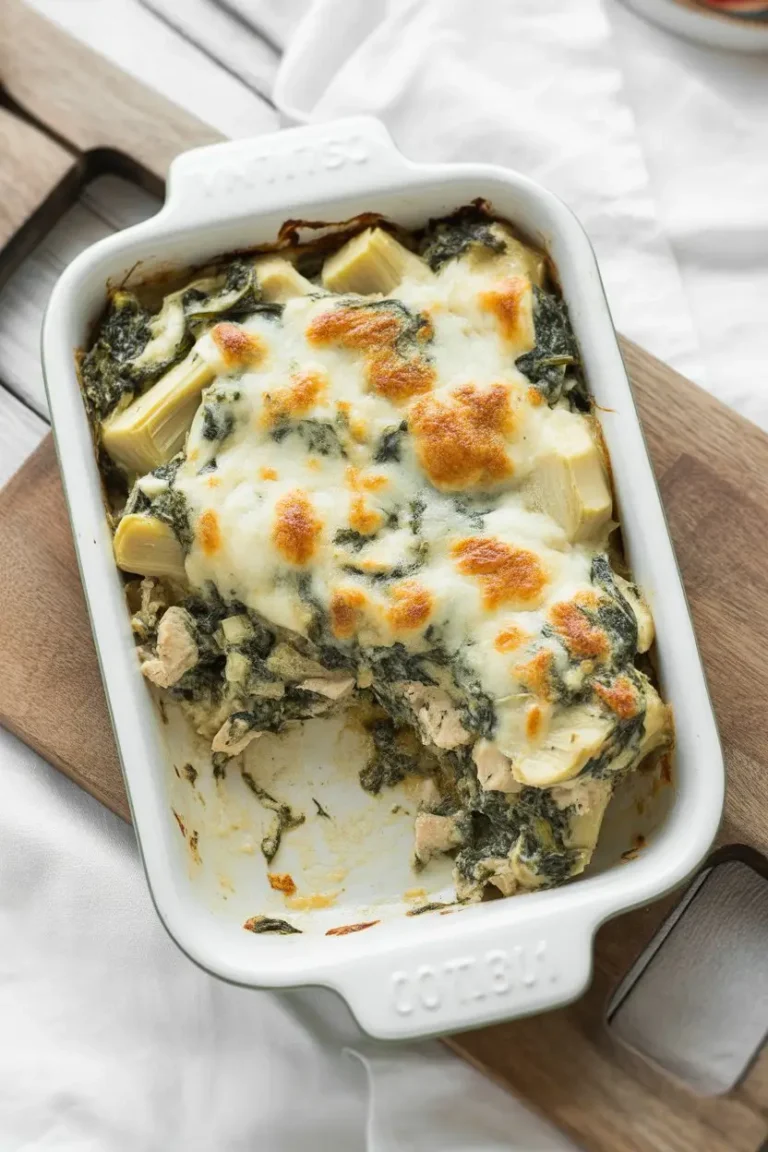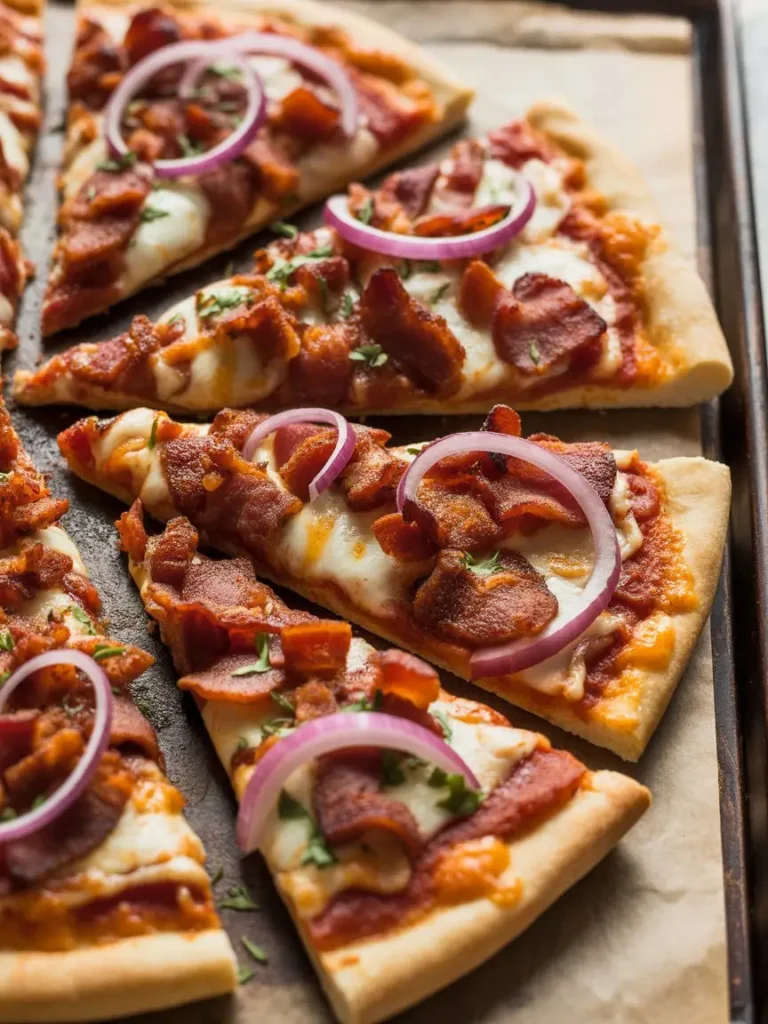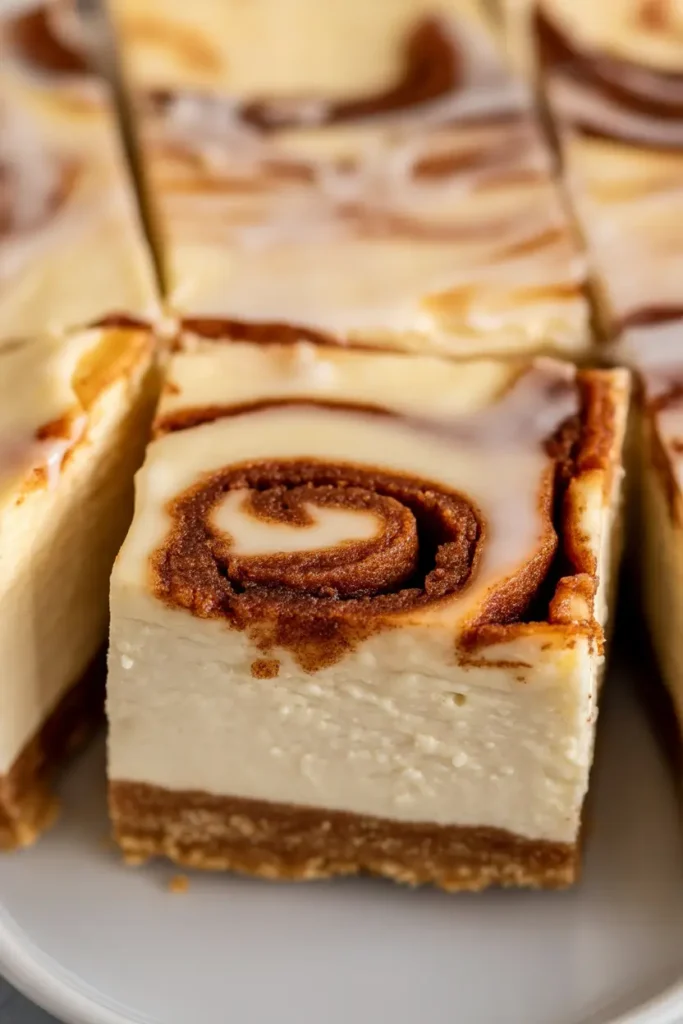
The Ultimate Mashup: Blender Cinnamon Roll Cheesecake Bars
Let’s have a real talk about cravings. You know those days when your brain is playing tug-of-war? One side screams for the warm, gooey, cinnamon-spiced comfort of a fresh cinnamon roll.
The other side demands the cool, creamy, tangy perfection of a rich cheesecake. It’s a classic dessert dilemma, and usually, you just have to pick one.
But what if you didn’t have to choose? What if you could slam those two incredible desserts together into one mind-blowing bar? That’s exactly what happened here. This recipe was born out of pure, delicious indecision.
And the best part? We’re making the cheesecake filling in a blender. Yes, a blender. It’s my secret weapon for the smoothest, most velvety cheesecake filling you’ve ever had, with basically zero effort. No stand mixers, no tired arms from whisking. Just pure, simple, dessert magic.
These bars have it all: a buttery graham cracker crust, a ridiculously smooth cheesecake layer, a sweet cinnamon swirl running through it, and a simple vanilla glaze on top. It’s the peace treaty your sweet tooth has been waiting for.
What You’ll Need
Here are the simple ingredients that come together to create something truly special. Gathering everything first makes the process a breeze.
For the Graham Cracker Crust:
- 1 ½ cups graham cracker crumbs (about 10 full sheets)
- ¼ cup granulated sugar
- 6 tablespoons unsalted butter, melted
For the Cinnamon Swirl:
- ½ cup packed light brown sugar
- 1 ½ tablespoons ground cinnamon
- 3 tablespoons unsalted butter, melted
For the Blender Cheesecake Filling:
- 16 ounces (two blocks) full-fat cream cheese, softened to room temperature
- ⅔ cup granulated sugar
- 2 large eggs, at room temperature
- ¼ cup sour cream or full-fat Greek yogurt, at room temperature
- 1 tablespoon fresh lemon juice
- 1 teaspoon pure vanilla extract
For the Simple Vanilla Glaze:
- 1 cup powdered sugar
- 2-3 tablespoons milk or heavy cream
- ½ teaspoon pure vanilla extract
Tools Required for This Recipe
You don’t need a professional kitchen for these bars. Here is the short list of tools that will help you get the job done.
- High-Speed Blender
- 8×8-inch or 9×9-inch baking pan
- Parchment paper
- Mixing bowls (for the crust and swirl)
- Spatula
- Measuring cups and spoons
- Knife (for swirling)
How to Make Blender Cinnamon Roll Cheesecake Bars
Follow these steps closely, and you’ll be on your way to dessert heaven. Remember, baking is a science, but it’s a fun one!
Step 1: Prep Your Pan and Oven
First things first, get your oven preheating to 325°F (165°C). Take your 8×8-inch baking pan and line it with parchment paper, leaving some overhang on two sides. This creates a “sling” that will make lifting the bars out later a piece of cake.
Step 2: Make the Crust
In a medium bowl, mix the graham cracker crumbs and sugar. Pour in the melted butter and stir until it feels like wet sand. Press this mixture firmly and evenly into the bottom of your prepared pan. Bake for 10 minutes, then set it aside to cool a bit while you work on the filling.
Step 3: Mix the Cinnamon Swirl
In a small bowl, combine the brown sugar and cinnamon. Add the melted butter and stir until you have a thick, paste-like mixture. Set this aside for a moment.
Step 4: Create the Blender Cheesecake Filling
This is the fun part. Place your room temperature cream cheese and granulated sugar into the blender. Blend on medium speed until completely smooth, scraping down the sides once or twice. Add the room temperature eggs, sour cream, lemon juice, and vanilla. Blend again, just until everything is combined. Stop as soon as it’s smooth to avoid incorporating too much air.
Step 5: Assemble the Bars
Pour about half of the cheesecake filling over your pre-baked crust. Drop small spoonfuls of the cinnamon swirl mixture all over the filling. Gently pour the remaining cheesecake filling on top.
Step 6: Swirl and Bake
Drop the rest of your cinnamon mixture on the top layer. Take a butter knife and gently drag it through the batter to create a marbled, swirled effect. Don’t overdo it—a few passes is all you need. Bake for 35-45 minutes. The edges should be set, but the center should still have a slight jiggle to it.
Step 7: The All-Important Cooling Process
Turn off the oven and crack the door open. Let the cheesecake cool in the oven for 1 hour. This slow cooling process is key to preventing cracks. Then, move it to a wire rack to cool completely to room temperature. Finally, cover it and transfer it to the refrigerator to chill for at least 4 hours, but overnight is even better.
Step 8: Glaze and Serve
Once the bars are fully chilled, it’s time for the glaze. Whisk together the powdered sugar, vanilla, and 2 tablespoons of milk. If it’s too thick, add another tablespoon of milk until it’s a pourable consistency. Drizzle the glaze over the top. Use the parchment paper sling to lift the bars out of the pan, slice, and serve cold.
Pro Tips for Perfect Bars
I’ve made my fair share of cheesecakes, and I’ve learned a few things. These little tricks make a huge difference.
- Room Temperature is Not a Suggestion: I can’t stress this enough. If your cream cheese, eggs, and sour cream are cold, your filling will be lumpy. Set them on the counter for at least an hour before you start. It’s the number one rule for smooth cheesecake.
- Don’t Over-Blend the Eggs: Once you add the eggs to the blender, mix only until they are just combined. Over-mixing adds too much air, which can cause the cheesecake to puff up in the oven and then crack as it cools.
- Patience with Chilling: The 4+ hour chill time is non-negotiable. It allows the cheesecake to set up properly, giving you those clean, beautiful slices. If you cut into it too early, you’ll have a delicious, creamy mess.
- The Parchment Sling is Your Best Friend: Seriously, don’t skip the step of leaving parchment overhang. It makes getting the bars out of the pan foolproof and saves you from a lot of potential frustration.
Possible Substitutions and Variations
Feel free to get creative! This recipe is a great base for experimentation.
- Crust Variations: Swap the graham crackers for Biscoff cookies, shortbread cookies, or even crushed pretzels for a salty-sweet vibe.
- Go Nutty: Add ½ cup of toasted, chopped pecans or walnuts to the cinnamon swirl mixture for a delightful crunch.
- Different Extracts: Try a little almond extract in the filling or a dash of maple extract in the glaze for a different flavor profile.
- Cream Cheese Swap: For an ultra-rich version, you can substitute half of the cream cheese with mascarpone cheese.
Nutritional Info, Pairings, and Efficiency
Here’s a quick-glance table to help you plan your dessert experience.
| Category | Details & Suggestions |
|---|---|
| Nutrition (Approx.) | Per bar (if cut into 16): 300-350 calories. It’s a treat! |
| Diet Swaps | Use Neufchâtel for lower fat. A gluten-free graham cracker crust works great. |
| Meal Pairings | Perfect after a light dinner. A fantastic partner to a strong cup of coffee or a cold glass of milk. |
| Time Efficiency | The hands-on time is short (under 30 mins). The rest is just waiting for baking and chilling. |
Make-Ahead Tips
These bars are ideal for making ahead of time, which is perfect for parties or just getting a jump on your week’s dessert needs.
You can bake the entire cheesecake bar recipe, cool it, and store it in the fridge (covered) for up to 2 days before you plan to serve it. Hold off on adding the glaze until just before you’re ready to slice and serve for the freshest look and texture.
Leftovers and Storage
If you somehow have leftovers, storing them is simple. They need to be kept in the refrigerator.
Place the sliced bars in an airtight container. They will stay fresh and delicious for up to 5 days. The graham cracker crust may soften slightly over time, but the flavor will still be incredible.
Can You Freeze Them?
Absolutely! These freeze beautifully. For best results, freeze the bars without the glaze. Place them in a single layer in a freezer-safe container or wrap them individually. They can be frozen for up to 2 months.
When you’re ready to eat, let them thaw in the refrigerator overnight. Then, add the fresh glaze before serving.
Frequently Asked Questions (FAQ)
Here are answers to a few questions that might pop up while you’re baking.
Q1. Why did my cheesecake crack?
Ans: Cracking usually happens for one of two reasons: the ingredients were too cold, or it was overbaked. Ensure everything is at room temp and pull the cheesecake from the oven when the center still has a slight wobble. The slow cool-down in the turned-off oven also helps prevent this.
Q2. Can I make this without a blender?
Ans: Yes, you can. A hand mixer or stand mixer will work just fine. The goal is simply to get the cream cheese completely smooth before adding the other ingredients. The blender just makes it exceptionally easy.
Q3. My cinnamon swirl sank to the bottom. What happened?
Ans: This can happen if the swirl mixture is too thin or warm, or if you over-swirl. Make sure your cinnamon mixture is a thick paste. When you swirl, be gentle and only make a few passes with the knife. Remember, you’re marbling it, not fully mixing it in.
Q4. Can I use a different size pan?
Ans: You can use a 9×9-inch pan. The bars will be slightly thinner, so you should start checking for doneness a bit earlier, around the 30-35 minute mark. A 9×13-inch pan would require doubling the recipe.
Wrapping Up
There you have it—a dessert that refuses to be put in a box. It’s the perfect harmony of two beloved classics, made ridiculously simple with the help of your blender.
The creamy cheesecake, the warm spice, the buttery crust—it all comes together in a bar that’s both comforting and a little bit fancy. It’s the kind of treat that makes everyone’s eyes light up when you bring it to the table.
Now it’s your turn. Give this recipe a try! I promise the hardest part is waiting for it to chill. When you make it, come back and leave a comment below. I’d love to hear how it turned out for you or answer any questions you might have!

